How the Lucky Iron Fish Can Increase Iron Absorption with Founder & CEO Gavin Armstrong, PhD
- How the concept of the Lucky Iron Fish evolved out of Armstrong's research time spent in Cambodia and how it's helping communities around the world alleviate the impact of iron deficiency.
- How to use the Lucky Iron Fish when cooking foods and recipes for your baby to help increase the amount of iron in their weaning diets.
- The impact of iron deficiency and how a few dietary tweaks can help increase the amount of iron release from foods and iron absorption in your baby's body.
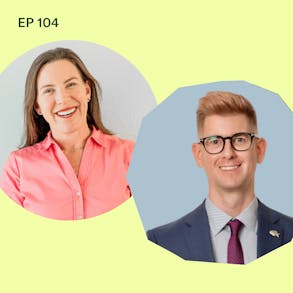
LISTEN TO THIS EPISODE
Episode Description
The Lucky Iron Fish is a unique kitchen tool, a piece of iron carved in the shape of a fish that you cook with for 10 minutes to release a significant amount of iron. This product is safe for babies aged 7 months+ to use and in this episode I’m interviewing the founder and CEO of Lucky Iron Fish Gavin Armstrong, PhD to learn more!
If you’ve ever worried about your baby getting enough iron, or if babies who do baby-led weaning can meet their iron needs, you’re going to love what Gavin has to say. The Lucky Iron Fish is easy to use, it’s proven safe and effective and this company and product are working to reverse the devastating effects and global impact of iron deficiency.
About the Guest
- Gavin Armstrong is the founder and president of Lucky Iron Fish Enterprise– Canadian social enterprise.
- First Canadian to receive the William J Clinton Award for international work against hunger
- Bachelor of Commerce and PhD in Biomedical Science from the University of Guelph
Links from this Episode
- Learn more about Founder & CEO Gavin Armstrong on his Webpage and Linkedin here
- Additional information about the clinical research related to the Lucky Iron Fish is here
- Follow Lucky Iron Fish on IG, Twitter
- Baby-Led Weaning with Katie Ferraro program with the 100 First Foods™ Daily Meal Plan, join here: https://babyledweaning.co/program
- Baby-Led Weaning for Beginners free online workshop with 100 First Foods™ list to all attendees, register here: https://babyledweaning.co/baby-led-weaning-for-beginners
Resources & Research
- Armstrong, G. R., Dewey, C. E., & Summerlee, A. J. (2017). Iron release from the Lucky Iron Fish:safety considerations. Asia Pacific Journal of Clinical Nutrition, 26(1), 148–155.https://doi.org/10.6133/apjcn.102015.14
- Charles, C. V., Dewey, C. E., Daniell, W. E., & Summerlee, A. J. S. (2011). Iron-deficiency anemia in rural Cambodia: community trial of a novel iron supplementation technique. European Journal of Public Health, 21(1), 43–48. https://doi.org/10.1093/eurpub/ckp237
- Charles C.V., Dewey C.E., Hall A, Hak C, Channary S, et al. (2015) A Randomized Control Trial Using a Fish-Shaped Iron Ingot for the Amelioration of Iron Deficiency Anemia in Rural Cambodian Women. Trop Med Surg 3: 195. doi:10.4172/2329-9088.1000195 https://www.semanticscholar.org/paper/A-Randomized-Control-Trial-Using-a-Fish-Shaped-Iron-Charles-Dewey/d1ed2db799228f6db330e0b56c413ea99a63b873
- Christopher, C.V., Alastair J. S., S., & Cate E., D. (2011). Iron content of Cambodian foods when prepared in cooking pots containing an iron ingot. Tropical Medicine & International Health, 16(12), 1518–1524. https://doi.org/10.1111/j.1365-3156.2011.02878.x
- Gavin R Armstrong and Alastair JS Summerlee (2014) The Etiology, Treatment and Effective Prevention of Iron Deficiency and Iron Deficiency Anemia in Women and Young Children Worldwide: A Review. J Women’s Health Care 4: 213. doi: 10.4172/2167-0420.1000213 https://www.longdom.org/open-access/the-etiology-treatment-and-effective-prevention-of-iron-deficiency-and-iron-deficiency-anemia-in-women-2167-0420.1000213.pdf
- NCHADS - Ministry of Health of Cambodia, & University of Guelph. (n.d.). Lucky Iron Fish Home Fortification of Iron. https://ichgcp.net/clinical-trials-registry/NCT02341586
- Rappaport, A. I., Whitfield, K. C., Chapman, G. E., Yada, R. Y., Kheang, K. M., Louise, J., Summerlee, A.J., Armstrong, G. R., & Green, T. J. (2017). Randomized controlled trial assessing the efficacy of a reusable fish-shaped iron ingot to increase hemoglobin concentration in anemic, rural Cambodian women. The American Journal of Clinical Nutrition, 106(2), 667–674. https://doi.org/10.3945/ajcn.117.152785
- Rodriguez-Ramiro, I., Perfecto, A., & Fairweather-Tait, S. J. (2017). Dietary Factors Modulate Iron Uptake in Caco-2 Cells from an Iron Ingot Used as a Home Fortificant to Prevent Iron Deficiency. Nutrients, 9(9), 1005.https://doi.org/10.3390/nu9091005

Latest Episodes
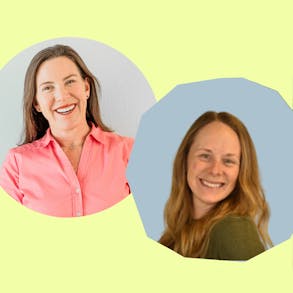
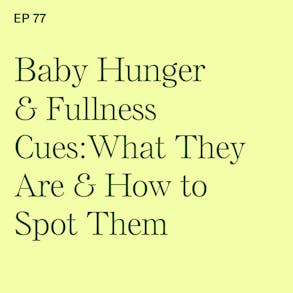
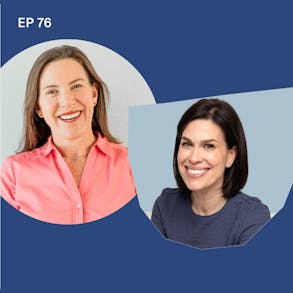
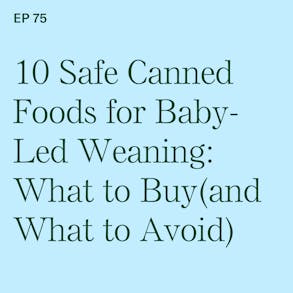
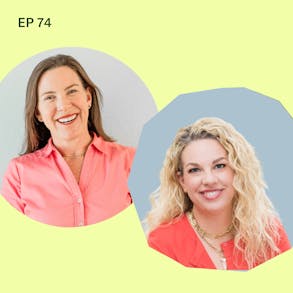
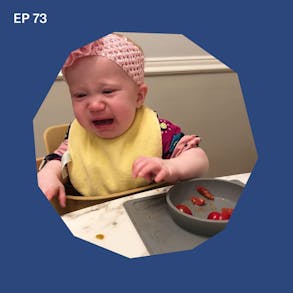
Gavin Armstrong (0s):
When you boil the Lucky Iron Fish for 10 minutes, but just any kind of acidity iron comes off the surface of the product, and then it's absorbed into the liquid. Every time you boil the fish, you're getting a little dose of iron, about six to eight milligrams.
Katie Ferraro (16s):
I'm Katie Ferraro, registered dietitian, college nutrition professor, and mom of seven specializing in baby-led weaning here on the Baby-Led Weaning Made Easy podcast. I help you strip out all of the noise and nonsense about feeding, leading you with the confidence and knowledge you need to give your baby a safe start to solid foods using baby-led weaning. Hey guys, welcome back today. I'm talking about a really unique concept in nutrition called the Lucky Iron Fish that when used in your home kitchen and everyday recipes can help increase iron release from foods and iron absorption by the body.
Katie Ferraro (56s):
So I'm going to be joined in just a minute by Lucky Iron Fish, Founder and CEO, Gavin Armstrong. I've been dying to interview him. I've been like writing questions down for weeks now because I have a lot of questions about the Lucky Iron Fish. I've used it for a number of years in my own home, but Gavin's going to explain more in depth about like exactly how it works. And we're going to kind of drill him on how he can use this for babies as well. But basically the Lucky Iron Fish is a cooking tool. It's a piece of carved iron, so shaped like a fish. He's gonna explain why and you drop it into boiling water or the liquid component of the meal that you're cooking. You cook it for about 10 minutes and then it releases a significant portion of your daily recommended needs for iron. So it's totally safe for babies.
Katie Ferraro (1m 36s):
Again, Gavin's gonna touch on that a lot, but the Lucky Iron Fish, it's also making a significant impact on a global basis because they're partnering with different agencies and non-governmental organizations that they're like in 88 countries now working to combat iron deficiency, which is the most common micronutrient deficiency around the world. So it's not just you who's like stressing a little bit about your baby getting enough iron: iron deficiency, again, a massive global problem. And he's going to talk a little bit about that. So Gavin Armstrong created the Lucky Iron Fish after he began investigating the use of these iron ingots in enhancing iron release from foods. And it basically acts like an iron supplement, but without the side effects of iron supplements, the company partners, as I mentioned with non-governmental organizations around the world, they work in public health and nutrition endeavors.
Katie Ferraro (2m 22s):
Gavin's won all sorts of awards for his work, with the Lucky Iron Fish. He's a Forbes 30 under 30 award recipient in the social entrepreneur category. He's the recipient of the Mohammad Ali humanitarian award also been named social entrepreneur of the year by EY Canada. So he's going to be sharing a lot about his company's social impact as well as what they're doing from a nutrition standpoint. And then I'm hoping you guys will walk away with some tangible ways that you can possibly use the Lucky Iron Fish in your own home kitchens, because iron of course is of such importance for babies. So, with no further ado, let's learn about how the Lucky Iron Fish can increase iron absorption with the founder and CEO, Gavin Armstrong PhD.
Katie Ferraro (3m 3s):
All right, well, hi Kevin, thank you so much for joining me on the podcast today.
Gavin Armstrong (3m 6s):
Thanks for having me.
Katie Ferraro (3m 7s):
All right. Can you tell us a little bit about yourself and then how the idea of the Lucky Iron Fish began and maybe back us up and even tell us what the Lucky Iron Fish is? Cause I'm sure that's new to many of our listeners.
Gavin Armstrong (3m 17s):
Sure. So the Lucky Iron Fish is a simple solution for iron deficiency, which is the world's largest nutritional challenge negatively impacting over 2 billion people around the planet. So almost a third of the world's population is suffering from this preventable condition. And the Lucky Iron Fish is a cooking tool that adds natural and healthy iron into your meals. I got involved in university. I did my PhD on this concept and I met with another student named Chris Charles, who was doing research in Cambodia and was looking at ways of fortifying food with iron, with cast iron, and had developed a, what was called the happy fish. And he did this because he found that if you were, if you could add a block of iron to food and it would fortify that with the iron, but women in Cambodia thought it looked like a piece of garbage that he picked off the side of the road and no one wanted to cook with it.
Gavin Armstrong (4m 6s):
But in Cambodian culture fish, it's seen as a symbol of luck. And so he shaped that block of iron, like a fish women wanted to use it because they thought it would bring luck to their household. And then when they felt healthier, they would say it was the luck of the fish that did that. I got involved and did my PhD on the concept as well, further innovated it and commercialize it. And now we have this incredible social enterprise that's operating around the world.
Katie Ferraro (4m 30s):
So how long has your company or business Lucky Iron Fish been in operation for?
Gavin Armstrong (4m 35s):
So I founded Lucky Iron Fish in 2012.
Katie Ferraro (4m 37s):
All right. So could you tell us a little bit about iron transfer from an iron product? Like Lucky Iron Fish? Like how much iron or does it actually transfer iron or does it cause increase of iron absorption from other foods? What's the mechanism by which your product helps with iron deficiency anemia?
Gavin Armstrong (4m 53s):
So the Lucky Iron Fish is made from a special kind of iron called electoral iron, which is actually a really tiny particle size fine powder that's been compressed into the shape of the fish. And when you boil the Lucky Iron Fish for 10 minutes, with just any kind of acidity could be just a drop of lemon or lime or stock or curry, something like that, the iron comes off the surface of the product and then it's absorbed into the liquid. And so every time you boil the fish, you're getting a little dose of iron, about six to eight milligrams of iron is absorbed. And that's what you'll have per use because of the way it's designed. The Lucky Iron Fish can be reused every day for up to five years.
Gavin Armstrong (5m 33s):
So it's a one-time purchase for half a decades worth of iron.
Katie Ferraro (5m 37s):
Then how exactly do you use it? Like, could you give me examples of, like, let's say there's a mom who is concerned about iron. She knows that, you know, baby's iron stores, they got from mom at the tail end of pregnancy, starting to dissipate around six months of age, how would they actually like use this in a household kitchen?
Gavin Armstrong (5m 51s):
So if you're any kind of liquid based meal, so soup, curry, you could just throw the fish in for 10 minutes. You can make iron water. So just boil a pot of water, but a little lemon and put it in the fridge. You can use that water in juice, you can make ice cubes with it. You can use that water with grains as well, like rice or couscous, quinoa. So it's really simple just throwing it in for 10 minutes and any kind of liquid based meal or just water. And that would be the simplest way of getting it.
Katie Ferraro (6m 16s):
So one thing I know that's so hard about, you know, iron metabolism, iron absorption is there's so many factors that can both inhibit and promote iron absorption in the body. So when we looked at the research about Lucky Iron Fish and, you know, people say, does it work ? Okay, how do you estimate exactly the quantitative effect of this? Can you guys say that it increases iron absorption by X percent or transfers Y milligrams of iron? How do you know since there's so many variables in iron metabolism?
Gavin Armstrong (6m 42s):
Yeah. So we've done multiple clinical trials ourselves, and we've worked with independent academic institutions who have done their own research, evaluating the efficacy of the Lucky Iron Fish. And in each of the trials, we had a group that did not use an intervention. We had a group that used the Lucky Iron Fish, and we had a group that used iron supplement pills. And what we saw in all of the studies except for one was that using the Lucky Iron Fish was just as effective as the iron supplement pills in improving iron status and reducing anemia. But we had a compliance rate of between 80 and 90% where the supplement groups had compliance rates of around 30 to 40%. And that's because the Lucky Iron Fish does not cause those negative side effects that the supplements can cause.
Gavin Armstrong (7m 27s):
And so it's not only an affordable solution, a sustainable solution, but it has that appeal from not having those side effects. And I mentioned one study where it didn't work and the population in a province in Cambodia and pray over here were actually suffering from thalassemia not just iron deficiency anemia, which is a hemoglobin apathy. And so we never would have thought that the Lucky Iron Fish would have worked for someone with thalassemia. And so what that study demonstrated was it did not improve the iron status nor did the iron supplement pills, but it also didn't cause any toxicity. So it didn't have an adverse effect, which wasn't important to find out at the end as well.
Katie Ferraro (8m 3s):
I think a lot of people who've used traditional iron supplements are well aware of some of the side effects, constipation being one, another one is that it can turn the stool very black which can just be off putting if you use Lucky Iron Fish, and let's say, I love your idea of making ice cubes out of it. Do you experience constipation or changes in stool color from the by-product of the Lucky Iron Fish?
Gavin Armstrong (8m 21s):
Because the Lucky Iron Fish is releasing a small and gentle amount of iron, you don't get those negative side effects. So it's just six to eight milligrams of iron iron supplements can have upwards of, you know, 30, 40, a hundred milligrams of iron depending on the absorbability. So what that means is the fish is going to be more gentle and not have those negative impacts and will take a little longer to have an impact on your health though. We see improvements between three and six months of regular use, whereas with an supplemental, you may see those results a bit quicker.
Katie Ferraro (8m 49s):
So Gavin, what are some of your favorite recipes to make that you use the iron fish for?
Gavin Armstrong (8m 53s):
So I spent years living in Cambodia doing research for this. And so I love making curry and I'll throw it in every time I'm making it, something like that, like a fish amok or a green curry, red curry, I always plop it in for the final 10 minutes.
Katie Ferraro (9m 5s):
I like to use it a lot for soups. I know you have some recipes on your website. One of the ones I made a lot, I said, there's a carrot ginger soup. And a lot of parents don't recognize, you know, babies can eat soup. Like we're teaching babies at six months of age, how to start using a spoon. We do a preloaded spoon in baby-led weaning. When you make soups, traditionally, they would be quite high in sodium, but you can use low sodium broth or Gavin's idea. You can just use the Lucky Iron Fish water in place of the high sodium broth. Not only are you avoiding the sodium, which is great for babies, but then you're also being able to introduce them to more iron, which of course we know is important. Can we talk a little about vitamin C? So we know that vitamin C helps human bodies absorb iron more readily. Do you have to have a vitamin C compound in the recipe that you're making in order to enhance the body's absorption from the Lucky Iron Fish byproduct?
Gavin Armstrong (9m 52s):
So you do need some type of acidity cause you do need to alter the pH of the liquid, which will help the iron come off the surface, but it will also help the iron be absorbed in the stomach. And we know that vitamin C is very effective at helping with the absorbability. So that's why if you do, I mean, citrus is great or tomato. We have a study that was done in India that made dhall, which had the appropriate amount of pH change. And so it does need that to help the iron come off the surface. And it has that added benefit of also helping it be absorbed by the stomach
Katie Ferraro (10m 21s):
Does adding the lucky iron fish to food change the taste of the foods?
Gavin Armstrong (10m 25s):
So if you use the product properly, which is just 10 minutes in one liter of water with a tiny bit of acidity, like a few drops of lemon. Most people do not taste any kind of change in what they're boiling. And one of my chapters in my thesis was actually, how could you misuse the product? So what happens if you did 10 fish for an hour kind of thing, or what happens if you use half a liter or five liters? And what we saw was it didn't release a dangerous amount of iron, but you do start to see the water or liquid become altered. So it starts to get a metallic smell, it can change color. And so we do encourage people just to use a tiny amount of acidity just for 10 minutes, it's still a safe to consume, but I understand that you don't want to have that unpleasant taste or smell.
Gavin Armstrong (11m 6s):
But also if you're cooking something like a soup or a curry that will also mask that taste as well. It's more when you're having just a drinking water where you might taste the difference.
Katie Ferraro (11m 16s):
I can imagine that chapter about ways you could possibly misuse. It was probably fun to put together. Let's think of all the ways people could possibly misuse this. I'm curious about people with hemochromatosis or iron overload disease that this could be potentially problematic for them. Is that a concern?
Gavin Armstrong (11m 29s):
Yeah, we definitely don't recommend anyone who has hemochromatosis to use this product. And if you do have hemochromatosis, you wouldn't want to be adding the Lucky Iron Fish into your meal, just like you wouldn't be taking iron supplements. And we do have that warning on our website and on the packaging.
Katie Ferraro (11m 43s):
I'm always interested in what's the most appropriate way to clean the Lucky Iron Fish. What do you suggest?
Gavin Armstrong (11m 48s):
Just soap and water after it's cooled. Obviously you don't want to burn your hands. It's, it's really easy to maintain. You do want make sure it's very dry after you clean it because you can get some discoloration or rust. If there is any rust on the product, just using, I use a lemon actually to help get it off, or you can use like a pot scrubber. It's not going to be dangerous, but I appreciate you don't want to have a rusty fish. We also sell a protection oil, which is used to help prevent the product from rusting and helps keep it clean.
Katie Ferraro (12m 14s):
Okay let's talk a little bit about cooking for babies. Is the Lucky Iron Fish safe to use for babies or what are the parameters that you guys recommend around use of like in infancy?
Gavin Armstrong (12m 24s):
So iron supplementation is not recommended for infants six months or younger. So we recommend at least seven months of age before you would start using this product or upwards of a year, you should speak to your healthcare professional. If you're going to start to add any type of iron into, into the diet.
Katie Ferraro (12m 42s):
How about cast iron skillets? I think it's like confusing to a lot of parents or if they're new to cooking. And a lot of our audience is like, all right, I have to finally start preparing healthful foods and learning all these things about nutrition. If you cook with a cast iron skillet and the Lucky Iron Fish does it like double or triple iron availability, is it work like that?
Gavin Armstrong (12m 58s):
So the concept of the Lucky Iron Fish did come from the thought process behind cast iron pan, because they can release some iron into the food. A challenge with cast iron pans is that different temperatures can release different amounts of iron, so it can be inconsistent. So you might not get enough to make a clinical impact to change your iron status. And also depending what you're cooking with, the different oils and things, you can actually create a shield on the surface. That's going to also prevent iron from leaching off. So you can use cast iron skillets to get some iron. I use one, but it might not be enough to actually make an impact on iron deficiency. So if you were to use the Lucky Iron Fish with a cast iron skillet, you're just topping up the iron.
Gavin Armstrong (13m 38s):
So you're, you know, you'd be getting between six to eight milligrams on top of whatever else that you were consuming.
Katie Ferraro (13m 43s):
So I noticed on your website, in addition to a Lucky Iron Fish I've had for years, I see you have a lucky iron leaf. What's the story behind that?
Gavin Armstrong (13m 50s):
So I, I mentioned that we used a symbol of a fish in Cambodia because it was seen as a symbol of luck. And as we started to grow and work in other countries, the symbol of a fish still works. It still had a lot of prominence in different cultures and religions. And it just makes sense. You put a fish in your pond, you people eat fish. But when we scaled into India with such an incredible large vegetarian population, women were hesitant to use the fish. Now it's not actually, you know, a real fish it's vegan certified, but just the name Lucky Iron Fish instantly turned off vegetarian women. So we did the same approach and we developed the Lucky Shakti leaf, which is just the leaf shape of the same product. And we started selling that internationally cause we had different customers, mainly vegans who liked that story a bit more and wanted to purchase that for themselves.
Gavin Armstrong (14m 35s):
So as I understand it, your company, Lucky Iron Fish, not only are you selling this product, but then you're also engaged in a number of different endeavors for our own social impact standpoint. Could you share a little bit about how you're giving back to the communities in which you work in which your partners work? So the Lucky Iron Fish is sold direct to consumers sonline, through our website, Lucky Iron Fish.com or some other sites like Amazon. And we take a portion of each of those sales and we put it towards donating units for free to families in need around the world. And that's gone to clinics in Rwanda and Tanzania, Indonesia emergency response efforts, but also food banks in Canada and the U.S, indigenous health centers in Northern Ontario.
Gavin Armstrong (15m 17s):
And we understand that iron deficiency is a global problem and it also exists in our backyard as well. And so with our impact fund, which is the funds we use from each sale, we put towards donating units for free.
Katie Ferraro (15m 28s):
I think I read that you guys are available in somewhat like 88 different countries. And then just looking at the list of partners, oh, I see peace Corps on there. I'm a former returned peace Corps volunteer. I was a peace Corps volunteer in Nepal working in reproductive health. And that's where I actually first learned about using iron devices, such as yours for supplementation. A lot of the research kind of carried over from Cambodia, which was in the same geographical region. And what are some of the other partners that you guys work with on a global scale?
Gavin Armstrong (15m 54s):
So we also sell the Lucky Iron Fish to NGOs and large volumes. And so we work with groups like world vision care, international Catholic relief services, global medic to help get large volumes of the Lucky Iron Fish out to vulnerable populations around the world. So we've got programs in Peru, Tanzania above Beneen Senegal. We're looking to scale up in Indonesia and India. So we're definitely quite a global have a global presence to help combat this massive complex challenge.
Katie Ferraro (16m 23s):
And I think it's so important and I love that you're reiterating just the magnitude and the scale of iron deficiency. So often parents are like my audience, very, very honed in on six to 12 months in iron and iron deficiency. But what we forget is that in toddlerhood and childhood iron deficiency still remains the largest micronutrient deficiency worldwide. So this is something that's important for your children, even beyond infancy. Do adult communities use this as well, or is it pretty much just tailored to families who are impacting kids and infants ?
Gavin Armstrong (16m 53s):
Yeah, I mean in terms of children, the first thousand days are really critical for development and especially cognitive development. And so there's been studies that have shown that if you're iron deficient, you'll have reduced cognitive development in children, which is, you know, something serious that will have an impact for the rest of that child's life. And so we definitely work with communities where there are children who are suffering from iron deficiency, but you need iron throughout your life. It is mainly women and children who suffer from iron deficiency, especially those who are low income. So the programs we do, whether that's here in north America or working abroad with our NGO partners are mainly targeted towards women and children.
Katie Ferraro (17m 29s):
Anything else that we didn't cover that you do want to talk about?
Gavin Armstrong (17m 32s):
I would say that we have a really dedicated customer service team that gets questions, all sorts of different questions from moms about how to cook and care for the Lucky Iron Fish. And so we absolutely love to engage with our customers and hear from them and also understand what challenges they might have, so we can change our communication strategy. We do have a cookbook as well that we put on our website and it not only has great recipes that you can use the Lucky Iron Fish with, but we've had some of our NGO partners submit recipes from communities where we work. So we actually have recipes from Peru, from Haiti, from Tanzania, from Beneen to sort of reflect the global elements of our work, which is really cool that you get to cook something just the same way a mother across the world is using to.
Gavin Armstrong (18m 15s):
And that's so important to our community as well. Just really trying to share that babies can have so many more foods than we oftentimes give them credit for. The recipes on your website are amazing, almost all of which can be adapted to be made safe for babies. And I'll link to all of the resources that Gavin's mentioning in the show notes. For this episode, if you go to blwpodcast.com forward slash one zero four, we'll link to their website, how you can purchase it, the recipes, where else can our audience go to learn more about your product or where's the best place for them to go, Gavin? The Lucky Iron Fish.com is our site. We keep all of our resources there. We really strive for transparency. And so we have all of our clinical trials posted on the site.
Gavin Armstrong (18m 58s):
You can learn more about iron. We have an iron one on one page, and you can also follow us on social media, on Facebook, Twitter, and Instagram @LuckyIronFish, we do lots of Q and A's and Instagram lives. And we really like to continue to engage with our customers.
Katie Ferraro (19m 13s):
Well thank you so much for sharing about the Lucky Iron Fish. I think it's such a new and unique concept to a lot of parents, but you guys are not only doing a world of good for families on an individual level, but also for communities around the world. So thank you again for being here
Gavin Armstrong (19m 26s):
Thank you so much for having me.
Katie Ferraro (19m 27s):
Well, I hope you guys enjoyed that interview with Gavin Armstrong, the founder and CEO of Lucky Iron Fish. I'm so impressed by what lucky iron fish is doing to help combat iron deficiency, which as Gavin pointed out is totally preventable. So if you guys want to check out the Lucky Iron Fish, their products, their recipes, and everything else that Gavin mentioned in this episode, I'll link to all of their resources on the show notes page. For this episode at blwpodcast.com forward slash one zero four. And sometimes I get a little bit nervous doing episode topics like this, like iron is important, but I don't want parents to stress out and freak out and agonize about it. If you're interested in checking out Lucky Iron Fish, it might just be one more tool in your tool kit, but there are lots of other ways that you can maximize your baby's iron absorption, maximize your baby's iron intake.
Katie Ferraro (20m 16s):
I teach all about how to easily incorporate high iron foods for baby-led weaning in my baby-led weaning for beginners workshop. If you haven't taken that yet, I highly suggest it I'll link to the registration page for that on the show notes, same places you find Lucky Iron Fish stuff blwpodcast.com forward slash one zero four. The free workshop is called baby-led weaning for beginners. It's all about how to get your baby to eat 100 different foods before turning one, without you having to spoon feed purees or buy pouches. And everybody on that workshop gets a copy of my hundred foods list. There's 20 high iron foods on there that you can use as part of your baby's weaning diets. So again, head to blwpodcasts.com forward slash one zero four.
Katie Ferraro (20m 58s):
And thanks for listening. Bye now.
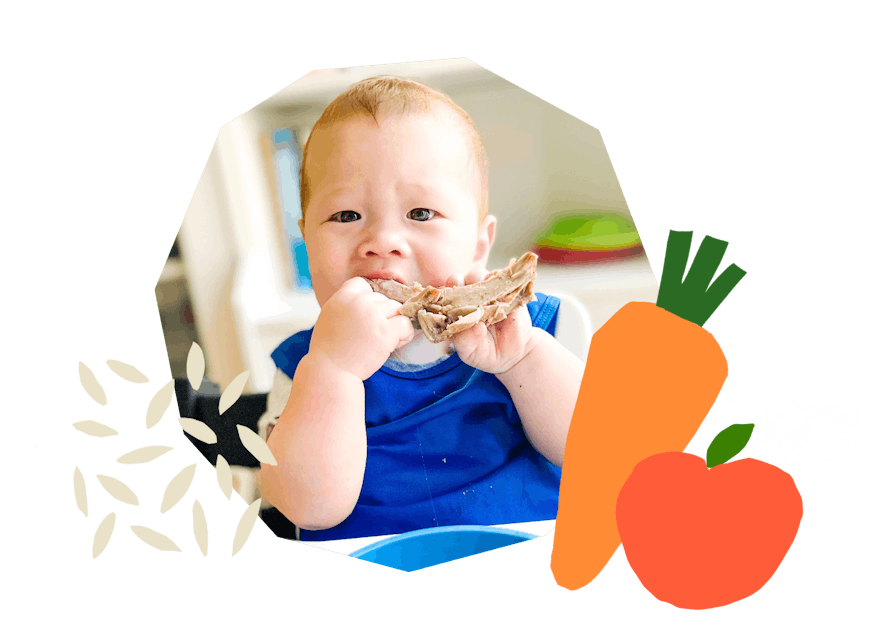
The Program Baby-Led Weaning with Katie Ferraro
A step-by-step digital program for starting solid foods safely and navigating the original 100 FIRST FOODS™ meal plan with baby-led weaning.
 EXPERT-LED, PROVEN APPROACH TO EATING REAL FOOD
EXPERT-LED, PROVEN APPROACH TO EATING REAL FOOD CONCISE VIDEO TRAININGS TO MASTER BABY-LED WEANING
CONCISE VIDEO TRAININGS TO MASTER BABY-LED WEANING 100 FIRST FOODS DAILY MEAL PLAN WITH FOOD PREP VIDEOS
100 FIRST FOODS DAILY MEAL PLAN WITH FOOD PREP VIDEOS
Baby-Led Weaning for Beginners Free Workshop
Is your baby ready to start solid foods, but you’re not sure where to start? Get ready to give your baby a solid foundation to a lifetime of loving real food…even if you’re feeling overwhelmed or confused about this next stage of infant feeding.
Get baby-led weaning recipes and tips delivered to your email inbox.

